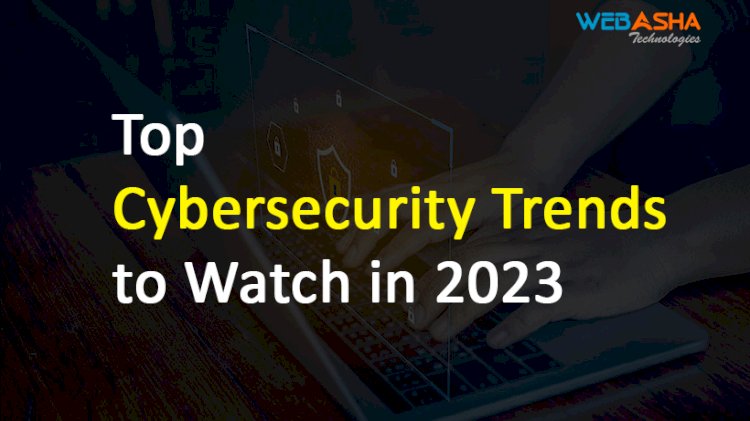Top Cybersecurity Trends to Watch in 2025
Explore the top cybersecurity trends shaping 2023 and beyond. Learn about AI-powered attacks, quantum computing's impact, IoT security, ransomware evolution, supply chain vulnerabilities, and more. Stay ahead in the dynamic world of digital security.

As the digital landscape continues to evolve, so do the tactics of cybercriminals. In the ever-changing world of cybersecurity, staying ahead of emerging threats is essential to safeguarding our digital lives and sensitive information. This in-depth blog takes a deep dive into the top cybersecurity trends to watch in 2025, offering insights into the challenges and innovations that will shape the realm of digital security.
Introduction: Navigating the Dynamic Cybersecurity Landscape
The cybersecurity landscape is marked by constant innovation and adaptation, both on the part of cybercriminals and cybersecurity experts. To protect our digital assets effectively, it's crucial to be aware of the latest trends that are shaping the way we defend against cyber threats.
1. Rise of AI-Powered Cyber Attacks
While artificial intelligence (AI) has been a tool for cybersecurity defense, it's now being used by cybercriminals to launch sophisticated attacks. AI can automate tasks such as targeting vulnerabilities, crafting convincing phishing emails, and evading traditional security measures.
2. Quantum Computing and Cryptography
Quantum computing's exponential processing power poses both opportunities and challenges for cybersecurity. It has the potential to break existing cryptographic algorithms, leading to a need for quantum-resistant encryption methods to secure sensitive data.
3. Zero Trust Architecture Adoption
The Zero Trust approach is gaining traction as organizations realize the limitations of perimeter-based security. It assumes that no user or device is automatically trusted and enforces strict access controls, verification, and least privilege principles.
4. IoT Security Concerns
The rapid growth of the Internet of Things (IoT) introduces a myriad of security challenges. Insecure IoT devices can become entry points for cyberattacks, leading to data breaches or even manipulation of physical devices.
5. Ransomware Continues to Evolve
Ransomware attacks have grown more targeted, destructive, and impactful. Cybercriminals are increasingly stealing sensitive data before encrypting it, using this information to extort victims further.
6. Supply Chain Attacks on the Rise
Supply chain attacks involve compromising third-party vendors to infiltrate a target organization. With interconnected digital ecosystems, these attacks can have far-reaching consequences across industries.
7. Biometric Authentication and Privacy Concerns
Biometric authentication methods like fingerprints and facial recognition are becoming more prevalent. However, concerns about the security and privacy of biometric data continue to emerge.
8. Cloud Security Challenges
As organizations migrate to the cloud, ensuring the security of cloud environments becomes crucial. Misconfigured cloud settings and inadequate security controls can expose sensitive data to potential breaches.
9. Regulatory Compliance and Data Protection
Stringent data protection regulations like GDPR and CCPA are driving organizations to prioritize data security and privacy. Non-compliance can result in hefty fines and reputational damage.
10. Cybersecurity Workforce Shortage
The demand for skilled cybersecurity professionals far outweighs the available talent pool. Organizations are grappling with a shortage of experts capable of effectively defending against evolving cyber threats.
Conclusion: Navigating the Future of Cybersecurity
The landscape of cybersecurity is a dynamic battlefield where innovative technologies clash with relentless cyber threats. Staying informed about the latest trends and adopting proactive security measures is no longer optional; it's essential for safeguarding our digital world.
As we continue to embrace new technologies, we must do so with a heightened awareness of the risks they bring. By staying educated, fostering a culture of security, and collaborating with experts, organizations and individuals can stay resilient against the ever-evolving landscape of cyber threats. In this era of constant change, knowledge truly is power. Stay vigilant, adapt, and secure your digital future.














![Top 10 Ethical Hackers in the World [2025]](https://www.webasha.com/blog/uploads/images/202408/image_100x75_66c2f983c207b.webp)








